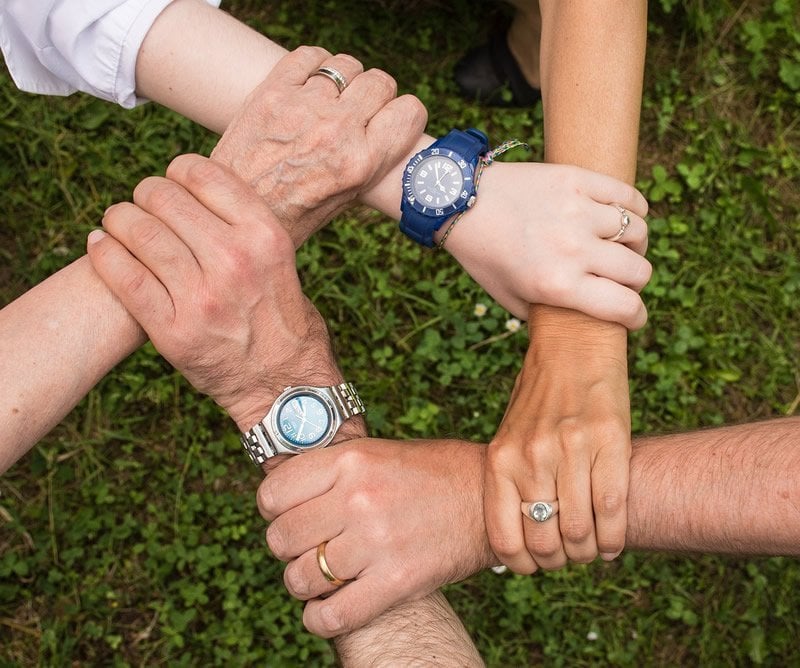Summary: Unique signatures of neural synchrony reflect whether pro-social or anti-social decisions are made. Brain regions, including the cingulate gyrus, amygdala, and medial prefrontal cortex, are highly synchronized when pro-social behavior is exhibited but decreases in the presence of anti-social behavior.
Source: Yale
Why do some people almost always drop $10 in the Salvation Army bucket and others routinely walk by? One answer may be found in an intricate and rhythmic neuronal dance between two specific brain regions, finds a new Yale University study published Feb. 24 in the journal Nature Neuroscience.
The biological roots of generosity and selfishness have long fascinated neuroscientists. As social animals, primates depend upon cooperation; yet in times of scarcity or in the quest for status, selfishness often wins out.
Global imaging studies in humans have shown many brain regions seem to be involved in decisions about sharing. Yale’s Steve Chang and colleagues decided to focus on neuronal activity between two specific brain regions of monkeys faced with a decision about whether or not to share fruit juice with another monkey.
In one scenario, the monkey could decide to give a drink to a companion or throw it out. In an alternative scenario, they could drink fruit juice alone or simultaneously share a drink with another monkey.
It turns out monkeys like to drink alone. But, if the alternative is to see the drink dumped in a bin, they prefer to give the other monkey a juice break
In both scenarios, researchers found distinct patterns of interaction in neuronal activity between the amygdala, a relatively primitive area of the brain, and the medial frontal cortex, an area where more deliberate thoughts originate. When monkeys were generous or pro-social, the interactions between these brain regions were highly synchronized, occurring at the same rate. When they were being anti-social, this synchronicity was markedly suppressed.

The researchers found that they could use the differences in synchronicity of the interactions to predict what decision the monkey had made: They merely had to look at the neuronal data.
“We found a unique signature of neural synchrony that reflects whether a pro-social or an anti-social decision was made,” said Chang, senior author of the Nature Neuroscience paper and an assistant professor of psychology and neuroscience.
He and his team also found other key differentiating characteristics in the brain during decision making. For instance, when animals were being pro-social, neuronal interactions were transmitted at one frequency, and when anti-social, at another frequency. The frequency was determined by the brain region in which neurons fired.
“We all know there are individual differences in levels of generosity,” Chang said. “Maybe Scrooge did not have high levels of synchrony after all.”
Source:
Yale
Media Contacts:
Bess Connolly – Yale
Image Source:
The image is in the public domain.
Original Research: Closed access
“Specialized medial prefrontal–amygdala coordination in other-regarding decision preference”. Olga Dal Monte, Cheng C. J. Chu, Nicholas A. Fagan & Steve W. C. Chang.
Nature Neuroscience doi:10.1038/s41593-020-0593-y.
Abstract
Specialized medial prefrontal–amygdala coordination in other-regarding decision preference
Social behaviors recruit multiple cognitive operations that require interactions between cortical and subcortical brain regions. Interareal synchrony may facilitate such interactions between cortical and subcortical neural populations. However, it remains unknown how neurons from different nodes in the social brain network interact during social decision-making. Here we investigated oscillatory neuronal interactions between the basolateral amygdala and the rostral anterior cingulate gyrus of the medial prefrontal cortex while monkeys expressed context-dependent positive or negative other-regarding preference (ORP), whereby decisions affected the reward received by another monkey. Synchronization between the two nodes was enhanced for a positive ORP but suppressed for a negative ORP. These interactions occurred in beta and gamma frequency bands depending on the area contributing the spikes, exhibited a specific directionality of information flow associated with a positive ORP and could be used to decode social decisions. These findings suggest that specialized coordination in the medial prefrontal–amygdala network underlies social-decision preferences.






